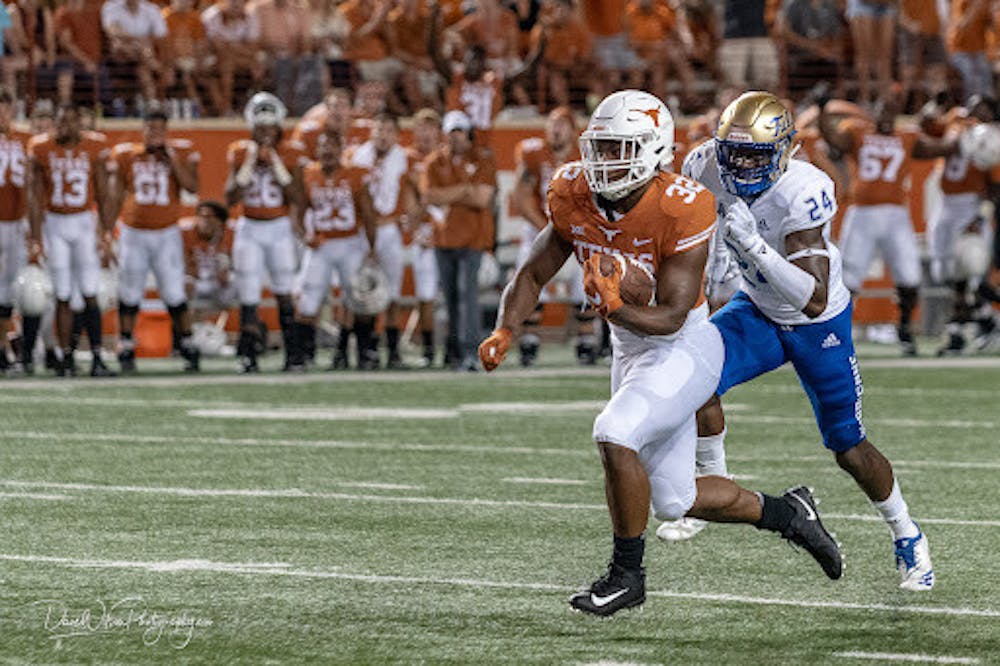
Every year, college athletic programs in the NCAA make the decision to switch in and out of various conferences. This is normal; level of competition, TV contracts, program goals and many more things can change from year to year, so it’s good that conferences are flexible enough to accommodate these changes.
Conferences serve a variety of purposes. They are formed by a group of teams that agree to play each other for a set number of games every year. They also split profits from TV contracts. Not only does this make scheduling easier, but it also makes the league a bit more stable, as teams that are underperforming still have a baseline income that allows them to stay competitive.
But there’s a key problem with this system: What’s stopping all of the good teams from joining one big mega conference so they don’t have to share their profits with teams that don’t pull their weight? Well, the answer to that question is emerging — there is nothing stopping this.
Early in August, news broke that the University of Oklahoma (OU) and the University of Texas at Austin (UT) were leaving the Big 12 Conference to join the Southeastern Conference (SEC). College football is the sport that tends to bring in a big chunk of these conferences’ money, and OU and UT were carrying more than their fair share of the weight in the Big 12. The SEC, which already had 14 teams, will now be an even larger giant in the realm of college football.
Many analysts felt that they were witnessing the death of the Big 12 Conference, which can be traced back to the Big Eight Conference founded in 1907. As August was ending, the Atlantic Coast Conference (ACC) announced it was forming an alliance with the Big Ten and the Pacific-12 Conferences. This could be seen as another blow to the dwindling Big 12 or perhaps as a promising sign that conferences will remain competitive with each other.
The alliance allows each of the three conferences to schedule more games together, increasing the quality of potential matchups. While this isn’t a straight-up merger, this mega alliance encompasses over 40 different teams. This essentially turns college football into a battle between two conferences, the SEC and this alliance.
Finally, early in September, just as the Big 12 seemed hopeless, the dwindling conference was credibly rumored to be adding four new schools: Brigham Young University, the University of Houston, the University of Central Florida and the University of Cincinnati. These new teams add big names to the Conference across several sports and also open up new markets for the Big 12 in Florida and Ohio.
Clearly, this has been a hectic time for NCAA realignment, but it has exposed several of the major issues with the current conference system. Firstly, these large mega conferences are a dangerous trend for the sport. Yes, it allows for more competitive games during conference play, but I would argue that the downsides outweigh this single benefit.
This arrangement lowers the quality of other conferences and reduces their ability to make money. Part of the appeal of collegiate athletics is that there are hundreds of teams all competing for the same end goal; mega conferences make it feel like that number is much smaller.
Secondly, rivalries are becoming less and less meaningful. Conferences used to be based around geographic factors, creating local rivalries. Think about lacrosse, for example. When Hopkins plays against Loyola University Maryland or the University of Maryland, College Park, fans from each team will show up, even to the other team’s arena. The atmosphere is competitive and it feels like the game has special importance. But conference alignment is increasingly becoming about money and TV contracts. Now that OU has left the Big 12, they will not play Oklahoma State University nearly as often; just like that, a rivalry has temporarily died.
There are many other issues with this system, but a more important matter to attend to is the solution. What is the best way to handle conferences in the NCAA? Firstly, conferences need to be based on geographical and historic rivalries, not money. Besides, making conferences full of the top teams is redundant; the playoffs already feature the best teams squaring off, so why not make conferences about having rivalries or other interesting matchups?
It should be noted that this solution would require a reworking of TV contracts. As long as TV contracts are made on a conference level, teams will be incentivized to conglomerate. Perhaps the NCAA as a whole should agree to TV contracts, not individual conferences. This, however, would probably not be a popular change.
Overall, there does need to be a shift in the way money is distributed throughout the NCAA. College sports are more fun when more teams are competitive. People love an underdog story from a school that no one has ever heard of. With the current structure, these may become less and less common as more money is concentrated in the top teams.
A more evenly balanced system that still rewards the best teams would help underperforming conferences put more money into their sports programs. It could also make conference TV contracts a less significant factor when deciding conference alignment.
In the end, I’m not sure that this problem will get fixed. It’s natural for teams to conglomerate to try and get as much money as possible. There have always been major conferences and mid-majors; conference stratification has always been a part of the system, and that isn’t a problem on its own.
At the very least, it’s promising to see the major conferences making moves to counter each other rather than all jumping ship to join the same group. In the end, college sports will still be played, even if the larger alignment isn’t perfect. And that’s enough to keep me watching.





